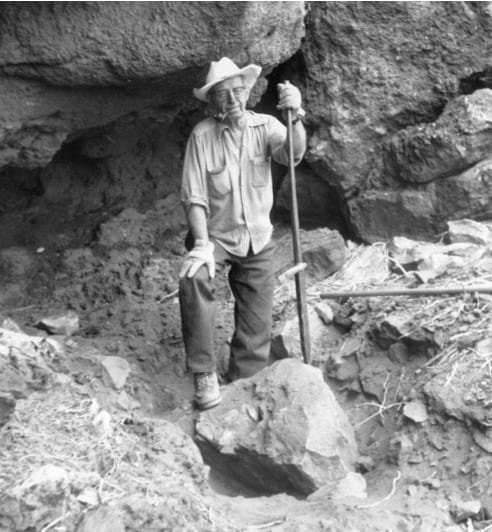DIGITAL JOURNEYS
INTO THE COLLECTIONS VAULT
By Pamela Endzweig
Director of Anthropological Collections
 The museum’s mission is to enhance knowledge about our natural and cultural worlds, inspiring stewardship of our collective past, present, and future. Here in the Anthropological Collections division, we are actively serving that mission through our ongoing digitization efforts. From our ever-growing assortment of web galleries to our searchable database of Northern Great Basin perishable artifacts, we’re continuously expanding public and scholarly access to the items in our collections by making them available online.
The museum’s mission is to enhance knowledge about our natural and cultural worlds, inspiring stewardship of our collective past, present, and future. Here in the Anthropological Collections division, we are actively serving that mission through our ongoing digitization efforts. From our ever-growing assortment of web galleries to our searchable database of Northern Great Basin perishable artifacts, we’re continuously expanding public and scholarly access to the items in our collections by making them available online.
We launched our web galleries project more than a dozen years ago. Our first gallery, published in 2006, showcased research by Klamath Tribal member and former Many Nations Longhouse steward Gordon Bettles—research that comprised his anthropology master’s thesis here at the University of Oregon. Many galleries followed—several funded by the Ford Family Foundation—spanning anthropology, paleontology, zoology, and ornithology. The galleries have proven to be incredibly effective at getting the word out, generating research and photo requests as well as gifts from donors across the county. Thanks to a generous grant from the museum’s Sandal Society, we now have funding to continue this effort and will be adding another ten galleries over the coming year, featuring the Jensen Arctic Collection, legacy collections from Myanmar (formerly Burma) and the Congo, spathe paintings from Papua New Guinea, and others.
With the archaeological perishables database now up and running, we’re shifting our focus to a collection of about 1800 historic Native American baskets from Oregon and the Far West—including California, the Columbia Plateau, Great Plains, Great Basin, Northwest Coast, Arctic and Subarctic, and Southwest, as well as the Northeastern United States. While many are more than a century old, we are also acquiring modern pieces, as resources allow, to showcase contemporary Native American artists. With funding from museum supporters, the Ford Family Foundation, and the Oregon Heritage Commission, we have been photographing the baskets and updating related documentation—a project now nearing its final stages. We expect the new database to go live later this year, providing researchers and enthusiasts around the world with virtual access to these significant holdings.

Many of our patrons are familiar with the grainy black-and-white footage showing archaeologist and museum founder Luther Cressman excavating cave sites in central and eastern Oregon during the 1930s. Additional reels documenting Cressman’s fieldwork are archived here at the museum. With funds from the National Film Preservation Foundation, we have begun to duplicate and digitize these movies.
Six reels, recently processed by FotoKem in Burbank, California, cover Cressman’s Klamath field trips in 1947 and 1949, as well as his work in the John Day region of north-central Oregon, reported in 1950 in the Proceedings of the American Philosophical Society. In addition to footage of several excavations, the films include a variety of field camp scenes—like crew members washing up and writing in their journals, and Cressman “supervising” the group, rifle in hand (the humor comes through even without the benefit of sound). It is striking that the crew includes several women—including a Mrs. Robert Douglas, identified as “Chaperon” in the crew list—whereas the 1930s footage depicts predominantly, if not exclusively, men. In these and other ways, the footage adds a window into the social context of fieldwork while contributing to our knowledge of archaeological excavation during the first half of the 20th century. Research on the footage is ongoing and we hope to obtain funds for digitizing additional reels in the coming years.
These digital offerings facilitate important and fascinating journeys into our collective heritage. We hope you’ll explore them—and stay tuned as they continue to grow.
NEXT: Ancient Footwear Dating Project
